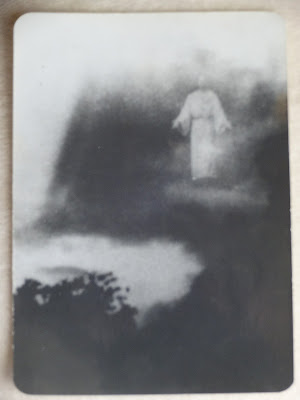Do You Like Your Easter Eggs Scrambled?
What do we 'see' when looking at the Easter Egg celebration?
The world has arguably grown from man's earliest origins into today's modern and sophisticated cultures, yet some practices and traditions have never changed.
Some may think this 'evolution' has come about by chance.
Yet some of us believe and 'see' the manner in which God has directed and conducted His will throughout all time; in times past into the modern era, even since the inception of recorded history.
It seems that men carried along with them certain signs, hints and meanings in their traditions.
It is interesting how these traditions were handed down as men moved away from one another and spread across the earth.
Despite languages, cultures and attitudes growing away from one another, and thus producing various and at times conflicting societies, this egg tradition continued quite consistently.
This consistency is notable and surprising.
The earliest civilizations of Sumeria and Egypt decorated ostrich eggs in gold and silver to place in tombs.[a]
Evidence found in Africa tens of thousands of years prior to Egyptian and Sumerian civilizations reveal ostrich eggs being decoratively engraved.[b]
Practically all cultures, according to archeologists, show a consistent tradition of celebrating spring with eggs, signifying a meaning of fertility and rebirth.[c]
This amazingly ties into the celebration of Christ's resurrection from the grave 2,000 years ago, with Christ having died and rising again the week of the spring equinox!
The believer / convert is baptized into Christ's death, signifying dying to one's old self, and being raised to a new life in Christ just as He rose from the dead.[d]
This seems to conclude the spring-time egg phenomena with eggs being buried along with the dead, signifying rebirth and new life.
The pessimist may be tempted to dismiss this as a “coincidence” while the optimist may take note of God's providence and authorship, eventually bringing forth His good will in providing the ultimate understanding of this ancient practice that has transcended the world's cultures, just as the testimony of Christ has traversed the globe.
References:
[a] Treasures from Royal Tombs of Ur, by Richard L. Zettler, Lee Horne, Donald P. Hansen, Holly Pittman; 1998, pages 70-72.
[b] Egg Cetera #6: Hunting for the world’s oldest decorated eggs. University of Cambridge.
[c] David Leeming (2005). The Oxford Companion to World Mythology. Oxford University Press.
[d] Romans 6: 1-10; Colossians 2: 11-12. New Testament.


Comments